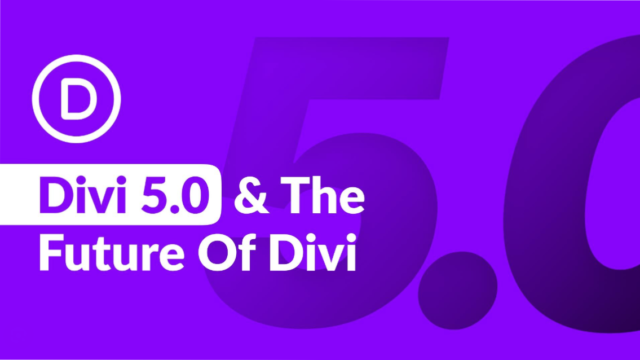Introduction
Let’s face it, ChatGPT is a game-changer. It’s an incredible tool for anyone who wants to get more done, faster. But like any powerful tool, it needs to be wielded with skill and finesse.
Think of ChatGPT as a super-smart, highly-caffeinated assistant. It’s eager to help, but it needs clear instructions to know what you want. That’s where prompt customization comes in.
Imagine you’re ordering a custom-made suit. You wouldn’t just say, “I want a suit.” You’d specify the fabric, fit, style, and details. Same goes for ChatGPT. The more specific your instructions, the better your results.
Custom Instructions: The Key to Tailored Responses
“Custom Instructions” are like giving ChatGPT a cheat sheet about you and how you want to work together. It’s like setting the stage for a productive collaboration.
Think of it this way:
- You tell ChatGPT who you are: “I’m a marketing manager,” or “I’m a college student.”
- You tell ChatGPT where you are: “I’m based in New York City,” or “I’m working on a project for a tech startup.”
- You tell ChatGPT how you want it to respond: “Keep it concise and factual,” or “Use a friendly, conversational tone.”
Why Bother with Custom Instructions?
- Enhanced Relevance: ChatGPT knows your context, so it’s better equipped to provide information and responses tailored to your needs.
- Accuracy Boost: By providing clear instructions, you reduce ambiguity and ensure ChatGPT understands your requests precisely.
- Reduced Repetition: You don’t have to repeat the same information every time you interact with ChatGPT.
Think of custom instructions as a personalized shortcut. You’re setting up ChatGPT to understand your preferences, saving you time and effort in the long run.
Setting Preferences for Responses: Crafting Your Perfect Conversation
Just like you have preferences for how you like your coffee or your pizza, you can set preferences for how ChatGPT interacts with you.
Here’s how:
Formality: Do you want a formal or informal tone? This influences the language and phrasing ChatGPT uses.
Neutrality: Do you want ChatGPT to express opinions, or stick to neutral facts? This is especially important for sensitive topics.
Response Length: Do you prefer concise responses or detailed explanations? Setting a preference helps ChatGPT stay focused and avoid overwhelming you with information.
Specific Instructions: Want ChatGPT to provide Excel formulas? Or generate programming code? You can provide specific instructions for different tasks to get exactly what you need.
The Power of Preferences:
- Streamlined Communication: You get the information you need without unnecessary back-and-forth.
- Consistent Interaction: ChatGPT consistently responds in the tone and style you prefer.
- Increased Efficiency: You’re not wasting time on unwanted information or unnecessary explanations.
Think of preferences as fine-tuning your communication with ChatGPT. It’s like adjusting the dial on a radio to get the perfect station—no static, just clear and crisp responses.
Using Custom Writing Styles: Let ChatGPT Mimic Your Voice
Ever wished ChatGPT could write in your unique voice? It’s possible!
Here’s the deal:
- ChatGPT can learn from your writing: Provide it with a few examples of your writing—a blog post, an email, or even a social media post.
- ChatGPT adapts to your style: It analyzes your writing patterns, vocabulary, and tone, and tries to mimic your style in its responses.
- Personalized Outputs: You get outputs that feel like they were written by you, making them more natural and engaging.
Think of it as giving ChatGPT a style guide. You’re showing it your preferences and letting it know how you like to communicate.
Benefits of Custom Writing Styles:
- Authenticity: ChatGPT’s responses feel more personal and genuine, reflecting your unique voice.
- Consistency: You can maintain a consistent style across different outputs, whether you’re writing articles, emails, or social media posts.
- Personal Touch: Your outputs feel more like your own work, enhancing your credibility and authority.
Imagine having ChatGPT write like your favorite author. With custom writing styles, you can take your content creation to the next level.
Self-Critique and Self-Prompting: ChatGPT Learns to Be Its Own Best Friend
Here’s a secret: ChatGPT can actually evaluate its own work! It’s like having a built-in editor that can spot inconsistencies and suggest improvements.
Self-Critique:
- ChatGPT reviews its own responses: It identifies areas that could be clearer, more concise, or more relevant to your needs.
- ChatGPT provides feedback: It suggests ways to improve its outputs, ensuring they meet your expectations.
Think of it as ChatGPT reflecting on its own work. It’s like an athlete reviewing game footage to identify areas for improvement.
Self-Prompting:
- ChatGPT asks clarifying questions: It recognizes when it needs more information to provide a better response.
- ChatGPT refines your prompts: It asks for more details or clarifies ambiguous requests to make sure it’s on the right track.
Think of it as ChatGPT being proactive. It’s like a student asking for additional instructions to make sure they understand the assignment.
Benefits of Self-Critique and Self-Prompting:
- Improved Quality: ChatGPT’s outputs become more accurate, relevant, and user-friendly.
- Greater Efficiency: You spend less time giving ChatGPT detailed instructions, as it can refine its own prompts.
- Enhanced Collaboration: You’re working with a tool that’s constantly learning and improving, becoming a more valuable partner.
Self-critique and self-prompting are like ChatGPT’s secret weapon. It’s constantly striving to improve and deliver the best possible results.
Configuring Response Length and Formats: Getting the Right Size and Shape
ChatGPT can be versatile, generating responses in a variety of formats. It’s like having a Swiss Army knife for your content creation needs.
Here’s how to control the format:
- Set the maximum word count: Ensure concise responses without exceeding your desired length.
- Choose the output format: Request outputs as tables, CSV files, HTML code, or even plain text, making the data easy to use in other applications.
Why is this Important?
- Conciseness: You get to the point without getting lost in lengthy responses.
- Data Integration: ChatGPT’s outputs can be seamlessly integrated into other tools and applications, boosting your efficiency.
- Flexibility: You have the freedom to choose the format that best suits your needs, whether it’s for reports, presentations, or code.
Think of response length and format as the finishing touches on your ChatGPT output. You can customize it to fit your specific needs and preferences.
Effective Use of Large Language Models: Unlocking the Power of AI
ChatGPT is a large language model, a powerful tool, but it’s also a tool that needs to be used wisely. Just like any powerful tool, it can be used for good or bad, depending on the intentions of the user.
Here’s the key:
- “Garbage In, Garbage Out”: The quality of ChatGPT’s output is directly related to the quality of your prompts.
- Clear and Detailed Prompts: Provide specific instructions, clear context, and specific examples to guide ChatGPT towards the desired results.
Why This Matters:
- Accuracy and Relevance: You get responses that are accurate and relevant to your needs.
- Ethical Considerations: You avoid using ChatGPT for harmful or misleading purposes.
- Maximizing Potential: You unlock the full power of ChatGPT by using it responsibly and effectively.
Think of large language models as powerful engines. They need the right fuel to operate at their best. Providing clear and detailed prompts is like giving ChatGPT the fuel it needs to generate high-quality outputs.
Optimize Your Prompts for Maximum Impact: Making the Most of ChatGPT
Now that you’ve learned the basics of prompt customization, let’s dive into some practical tips for getting the most out of your ChatGPT interactions.
Tips for Crafting Effective Prompts:
- Be Specific: Instead of asking “Write a blog post about social media,” specify the topic, target audience, and desired tone.
- Provide Context: Give ChatGPT information about your project, industry, or goals.
- Use Examples: Provide examples of the style or content you’re looking for.
- Break Down Complex Tasks: If you have a complex request, break it down into smaller, more manageable prompts.
- Start with a Question: Framing your prompt as a question can help guide ChatGPT’s response.
Think of prompt optimization as a skill that improves over time. The more you experiment with different prompts, the better you’ll become at getting the results you want.
Custom Settings: Tailoring ChatGPT to Your Workflow
ChatGPT offers a range of custom settings that let you further personalize your interactions.
Here are some key settings to explore:
- History: Enable or disable the ability for ChatGPT to remember previous interactions.
- Temperature: Control the creativity and randomness of ChatGPT’s responses.
- Top_p: Adjust the diversity of ChatGPT’s output by setting the probability threshold for words to be selected.
Think of custom settings as fine-tuning your ChatGPT experience. You can adjust these settings to match your personal preferences and workflow.
Tailored Responses: Getting Exactly What You Need
By customizing prompts and settings, you can ensure that ChatGPT delivers the responses that you need, when you need them.
Here’s how custom settings contribute to tailored responses:
- Accurate Information: ChatGPT can access and process vast amounts of information, providing you with accurate and up-to-date data.
- Creative Content: ChatGPT can generate creative text formats, such as poems, scripts, musical pieces, email, letters, etc.
- Personalized Insights: ChatGPT can provide insights based on your specific needs, interests, and context.
Imagine having a personal assistant that understands your needs better than you do. With prompt customization and tailored responses, you can unlock the full potential of ChatGPT and make it an indispensable part of your workflow.
Conclusion: Harnessing the Power of AI for Enhanced Productivity
Mastering ChatGPT is an ongoing journey. It’s about learning to communicate effectively with a powerful tool and using it to achieve your goals.
As you continue to explore and experiment with ChatGPT, you’ll discover new ways to use it to streamline your work, boost your creativity, and enhance your productivity.
Remember, ChatGPT is a powerful tool, but it’s just a tool. The real magic happens when you learn to use it effectively and creatively.
So, start customizing your prompts, setting your preferences, and experimenting with different settings. The more you use ChatGPT, the more you’ll appreciate its potential and the more it will become an indispensable part of your workflow.
Happy prompting!







